Kata (Form)
The first 10 Katas mentioned below are referred to as kaishu (open), as they are free of constant muscle contraction and breathing is “normal”. The last 3 are referred as heishu (closed). Heishu can refer to muscle contraction and “ibuki” style breathing unique to Sanchin and Tensho. Secondly, it can imply the restriction and specific direction of energies within the energy pathways of the body, both superficial and deep.
Gekisai dai Ichi (Attack & Destroy One)
Created by Chojun Miyagi Sensei in 1940 for introduction into the school system and to help make the average person stronger. It is a power Kata designed to help you combine and create power and speed for your punches, kicks, blocks and moving. In 1948, after WWII, Miyagi Sensei began to teach the Gekisai Katas in depth as a regular part of Goju-Ryu in his own dojo. Until this time, Sanchin was the first Kata taught in Goju-Ryu. Sanchin is physically and mentally a demanding Kata and requires a great deal of time and patience to learn and perform properly. The Gekisai Kata however are easier to learn and perform, and contain dynamic techniques which are more attractive to young people.
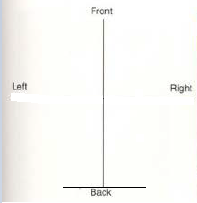
Gekisai dai Ni (Attack & Destroy Two)
Introduces and develops tora guchi and nekoashi dachi which is a common feature of higher level Kata. It also introduces open hand techniques. These Katas contain the same kanji for “sai” found in Saifa. This would suggest that even though these Kata were designed primarily as a form of exercise, Miyagi Sensei included his understanding of combat as part of their makeup.
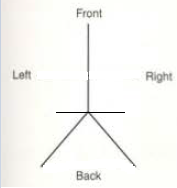
Saifa (Smash and Tear Apart)
Goju-Ryu’s Kata origins come from the martial arts taught in the Fuzhou area of southern China, largely Crane and Xingyi/Baqua as well as other internal and external martial arts. Kanryo Higaonna Sensei was taught this Kata, along with the other Kata of Goju-Ryu, while he studied in China from 1863-1881 under the direction of RuRuKo (Xie Zhongxiang in Chinese) and others. These Kata and martial strategies would become the basis of the the quanfa of Higaonna Sensei, which later Miyagi Sensei would call Goju-Ryu. From an understanding of the grappling and striking techniques of this Kata, Saifa can be interpreted to mean grabbing and tearing of tissue in close-quartered combat.
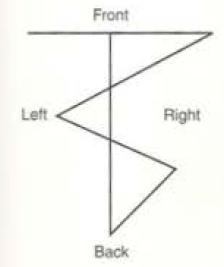
Seiyunchin (Control and Pull)
The name Seiyunchin implies the use of techniques to off balance, throw and grapple. It is this understanding that imparts the original intentions of the Kata of Naha-Te before the sport alignment of modern Karate-Do. Seiyunchin contains close-quartered striking, sweeps, take-downs and throws.
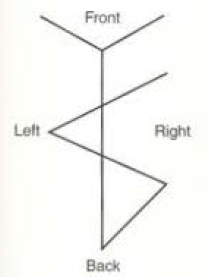
Shisochin (Four Directions of Attack)
The idea of four directions can come from the performance of the four shotei uke in four directions. It can also represent the four elements represented in Chinese medicine (Acupuncture) of Wood, Fire, Metal and Water with man representing Earth. Since this was the science and culture of that period in China when Higaonna and Miyagi both studied in Fuzhou, it would be a great oversight to discount this aspect as a very probable explanation of the Kata’s name and martial intent.
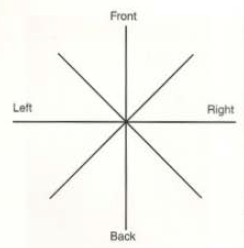
Sanseru (36 Hands)
This Kata is unique as Miyagi Sensei studied this Kata under a direct student of RuRuKo during his studies in Fuzhou, China beginning in 1916. Sanseru, from its numerical designation, would seem to have its roots in Buddhism. This is not to infer that there is a religious connection or implication with this Kata or Karate-Do, but simply that Buddhism was a part of the culture of the people of that time. It should also be noted that numbers had a very important role in the language of the more ancient Chinese before the invention of kanji. A more realistic explanation of this and the other numerically named Kata is that they refer to a systematic method and understanding of certain groupings of vital acupressure points. It is this science that the martial arts was based upon and developed. Feng Yiquan, who lived during the Ming Dynasty (1522-67) developed this particular method of using variations of “36” forbidden points to defeat his opponents. Other disciples of Feng created other quans expanding the number to 72 and ultimately 108. Sanseru is found in the following styles of Chinese Boxing: Crane, Tiger, and Dog.
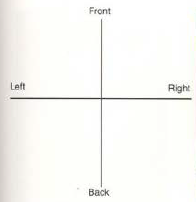
Sepai (18 Hands)
The reference to “18” in naming this Kata has a couple of interpretations. Like Sanseru, there is suggested a connection to Buddhist philosophy. Another insinuates “18 guards for the King”. The most apparent and most meaningful in the naming of Sepai is again from the martial arts development and the use of attacking pressure points. 18 is one half of 36 suggesting that perhaps an alternative set of attacks and defenses of preferred techniques and strategies from the original Sanseru 36. Sepai is found in Monk Boxing.
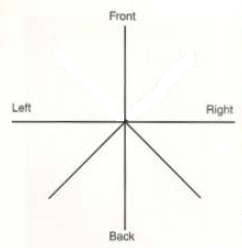
Seisan (13 Hands)
Sesan, Sanseru and Sepai all share the kanji “se”. This may well be a Chinese dialect of the Okinawan term “te” or “fighting hand”, referring to life-protection techniques. Sesan is believed to be the oldest of all Okinawan Goju-Ryu Katas. Sesan is practiced in the following styles of Chinese Boxing: Dragon, Lion and Monk Fist.

Kururunfa (Holding Ground)
This Kata epitomizes the ideals of Go (hard) and Ju (soft). Stance transitions are quick and explosive while the hands techniques are employed using muchimi (heavy sticky movement). As in the other Katas of Goju-Ryu, it is quite evident that grappling and close-quartered fighting is the favored fighting style. The same kanji “fa”is found in Saifa. Again, this would suggest a strong emphasis on grappling.
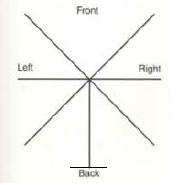
Suparinpei (108 Hands)
This Kata is the most advanced Kata in Goju-Ryu. It contains the greatest number of techniques and variations. Suparinpei is deceptive in that it appears simple in execution but when combined with transitions and changing tempos, it is only surpassed by Sanchin in technical difficulty and understanding. Once again, the number “108” is suggested to have origins in Buddhism and can represent the “108 sins of man”. On the Chinese New Year, temple bells are rung 108 times to “drive away the evils of man”. Suparinpei is found in the following styles of Chinese Boxing: Dragon, Tiger and Monk Fist.

Sanchin (Three Battles)
Also known as Sanchin Dai Ichi. This Kata is probably the single most valuable training exercise in Goju-Ryu. Like the other Kata of Goju-Ryu, Sanchin can be found in several Chinese arts (San Jan), particularly the southern styles including four styles of Crane Boxing, Dragon Boxing, Tiger Boxing, Lion Boxing, Dog or Ground Boxing and Monk Fist. Sanchin has such aspects as deep, diaphragmatic breathing found in many internal arts as well as external attributes like mechanical alignment and muscular strength. The original Sanchin that Higaonna Sensei learned from RuRuKo (1852-1930) was performed with open hands and with less emphasis on muscle contraction and energetic breathing. With the changes brought about by Emperor Meiji (Meiji Restoration Period 1888-1912), Higaonna Sensei changed the open hands to closed fists as the martial meaning was no longer emphasized. Later Miyagi Sensei would again alter the Kata in pattern alone. Sanchin translates as “3 Battles”. This has many meanings. First it refers to the struggle to control the body under physical fatigue. With fatigue the mind begins to lose focus and thus the spirit begins to diminish as well. Therefore Sanchin develops discipline, determination, focus, perseverance and other mental attributes. The Chinese refer to this as Shen (spirit), Shin (mind) and Li (body). Another possible interpretation refers to the “Three Burners” of the body as decribed in Traditional Chinese Medicine. The aim of the Kata is to train the three essential elements of Budo: ki (energy), breathing and the body. Ki is the mysterious power that cannot be seen with the eyes and emanates from the entire body to suppress and overwhelm an opponent. The breath consists of: breathing methods, breathing for life, and breathing to strike an enemy. The body represents the muscles and bones of which we are composed of. There are Yin and Yang principles in the way of breathing. The Yin is breathing with the mouth partially open, exhaling in short sharp breaths. The Yang is opening the mouth wide and exhaling in long breaths that originate from the base of the abdomen. The Yin breathing may be felt as cool air when the hand is held in front of the mouth when exhaling. The Yang breathing feels hot. The way in which you breathe may be divided into 5 categories:
1. Deep inhalation Long exhalation.
2. Deep inhalation Short exhalation.
3. Shallow inhalation Short exhalation.
4. Shallow inhalation Long exhalation.
5. Combination of 1, 2, 3, and 4.
Sanchin begins calmly and finishes calmly. There is calmness in the movements and all the movements take place in a state of calm. Calmness and movement are dichotomies, in other words, calmness and movement are Yin and Yang. Goju-Ryu is said to begin and end with Sanchin. The depth of Sanchin is immeasurable in the training of the ki, breathing, and the body, and is sufficient to develop an immovable spirit. This Kata can also be practiced with a method of checking strength, posture, hand concentration during the performance of the Kata called shime. This involves a range of techniques from hard strikes to check the tone of the student’s muscles and overall strength to very soft and slow pushes and pulls to test the student’s ability to react in order to maintain his position.
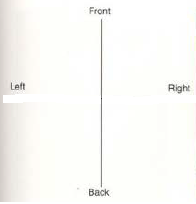
Sanchin Dai Ni (Three Battles 2)
The second Sanchin or Kanryo Higashionna’s Sanchin, is an older version of this Kata. The practitioner always goes forward, but turns 180 degrees twice. Initially it was taught with open hands, but later it was changed to closed fists by Chojun Miyagi’s co-student Juhatsu Kyoda, founder of To’on-Ryu, and adopted by Chojun Miyagi as well.

Tensho (Turning Palms)
Tensho is derived from the Chinese form Rokkishu. Unlike Sanchin, which is almost identical to its Chinese counterpart, Tensho is uniquely Okinawan. From his understanding of the Kata of Goju-Ryu and the “nature of man”, Miyagi Sensei developed Tensho to further complete his Goju-Ryu where Sanchin left off. Tensho has many of the same principles of Sanchin but goes further to include more intricate concepts of the techniques of Goju-Ryu. These concepts expressly come alive in kakie. The most notable difference between Sanchin and that of Tensho is that the breathing is explicitly different than that of Sanchin. The breathing of Tensho is not “hard” and external like Sanchin. The breath is internalized distinctively different.

